Adding Solar to an Existing System to Meet Demand
I put in a solar system 7 years ago. It is a 20 year lease and the payments are reasonable, working out to about $60/month for 20 years. 60 * 12 * 20 = $14,400. Cost is $14400/4680 or about $3.08 per watt. That included some budget panels and an Enphase micro inverter.
My next step is to add solar, via ground mount, to offset the many additional electric loads I added (stove, car, more heating), and provide battery backup.
Many solar companies are not good at doing what I want to do, because their business model is based on installing 10K or more of solar, and thus they don’t want to deal with the presence of an existing solar system. Especially a leased system! Here is how I am getting around the limitation of keeping the leased system (which could be bought out but that’s not a good deal).
My plan is to lower the usage of utility power by moving several of my key circuits to a new subpanel that is powered by an off grid solar setup. This means: an 8K “hybrid inverter” that has power coming in three sources: new battery, new solar panels and the grid. This inverter should be able to power one air source heat pump, one heat pump water heater, the fridge circuit, and some key plugs in the house.
In my case I am aiming for about 4400 watts of added solar, 14000 kwh of battery, and a 20 amp grid connection for those rare situations where the there is no sun for 3 or more days at a time.
Once I have a “critical loads” sub panel, I will remove several of the key circuits in my house from the main panel and put them into the sub panel.
To power the sub panel the inverter I choose needs to support ~ 20amps of solar input on multiple strings, with the VOC between 200 and 400 volts. The inverter will charge a 48 volt battery.
If I do most of the work myself to mount panels and run conduit, and have an electrician do the indoor wiring, the system should cost less than the one I bought in 2016. (If I were to just add a battery to my existing system, I have quotes over $20K, which seems ridiculous.)
If you are trying to do the same thing or have already done so, feel free to reach out. In my case, it may be necessary, as the electrical panel can handle 200 amps and a home converted to electric heat and electric cars might be pushing the limits of that service.
GBA Detail Library
A collection of one thousand construction details organized by climate and house part
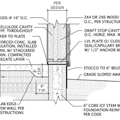
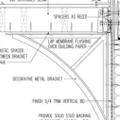



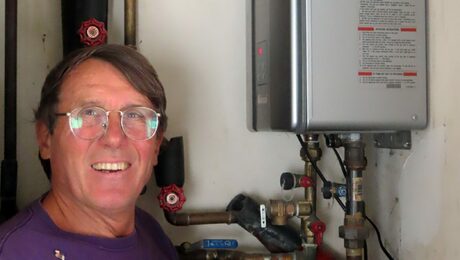
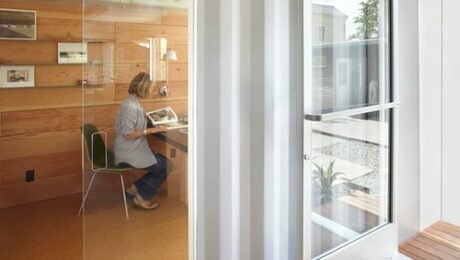
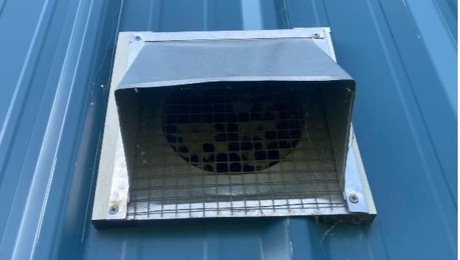
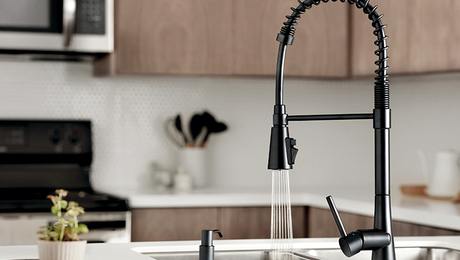
Replies
It's very important to use the correct units for that battery, which would likely mean you want a "14,000 watt hour" battery, a 14 kWh battery. I see this mixed up all the time, and it's a BIG difference! Similar mixed up units are also used in the media to misrepresent things, sometimes by accident, but often on purpose, either to make something look better or to make it look worse.
I don't see a problem with what you describe, since you would essentially just be building a seperate system, isolated to that one small subpanel. I would advise you against going with a battery system 'off grid' style though -- there are a lot of downsides to a system, some of which are the cost, and the ongoing maintenance required. If you do decide to continue with such a system, I recommend putting the battery string in a seperate fire rated room seperated from the main house, such as a small "battery room" off of the garage.
I deal with a lot of battery systems at work, many of them VERY large systems. Anyone who works with batteries will tell you that they hate batteries.
Bill
We have 2 new fire rated rooms that are 5 x 8 and walls are fieldstone and concrete. Don't worry we have all of that covered! We just need to add one more fire door.
The batteries you deal with -- are they lithium iron phosphate? Wall mounted self contained units? I think the technology of 2023 is much cleaner than the diy type batteries. I am going to stay away from a homemade battery.
I work in the telecom industry. We use mostly VRLA cells, typically variations on the old lead acid batteries (although much fancier than what's used in a car battery). Very little lithium battery chemistry is used in the telecom world.
The problem is all batteries have a downside. Lead acid batteries give off hydrogen gas when overchargered, and hydrogen sulphide gas when deeply discharged. Both are bad, but in different ways. Lithium ion cells can overheat at the extremes of their charge limits, and if it goes too far, they produce their own oxygen to feed their fire. That's bad too! LiFePO4 cells are safer, but spendy.
I really think you're far better off just using grid power when your solar system isn't producing. This is safer, cheaper, and less maintenance issues to deal with.
Bill
Would buying out the lease be a better idea than dealing with batteries?
Walta
no, it would cost more than buying the battery. Battery cost has come down to $4000 and buying out the least would cost over $15000, which is a story in itself.
Maybe your math is different than mine.
13 years of payments remain 60X12 X13 = 9360 total of payments.
If your interest rate is 9% that would make payoff amount would be $5,500 today unless the loan has prepayment penalties.
The fact that you are not allowed to expand the system and it makes the home almost unsellable combined with the high interest rate are the reasons leasing is not very popular.
Seems to me the sooner you come to the conclusion that leasing solar was a bad idea that cost you money every month the sooner you will escape from the lease.
Battey storage is another bad choice unless it is the only viable option.
Walta
if we pay off the loan then we don't own the system and no we can't just pay the principal, the contract didn't allow for that. The contract did allow a buyout at about $8500 at 7 years, however the company that now owns the lease is not honoring the contract. we would need to get lawyers involved to get them to honor that payment. So we made a decision to just let the company be on the hook for fixing the existing system for another 13 years. That might get us warranty replacements on the micro inverters, for example.
I bet if we wait 4 years and then pay off the lease the company won't repossess the panels. If we did it now there is a danger that they could do just that. though I would appreciate any wisdom of others on this issue.
I would not keep batteries in the house. Garage, especially if detached is the best spot for it (this might be code requirement anyways).
I think a simple zero export setup and skipping the battery is even easier. This means more power from the grid when the sun doesn't shine but the ROI on that batteries is probably never.
About the only reason I would add batteries is for backup power, in that case they can be much smaller and since you won't be cycling them, they will also last much longer.
have there been any house fires with lithium ion phosphate chemistry batteries as the cause? I am talking about the all in one units where the batteries are in a case, and not "ternary" lithium ion which are more prone to runaway.
We do have an unfinished basement and can make a fire rated section of it, which attaches to the garage. The garage is a possibility, however a car can drive into the battery in the garage, which seems to negate the supposed safety of putting it there.